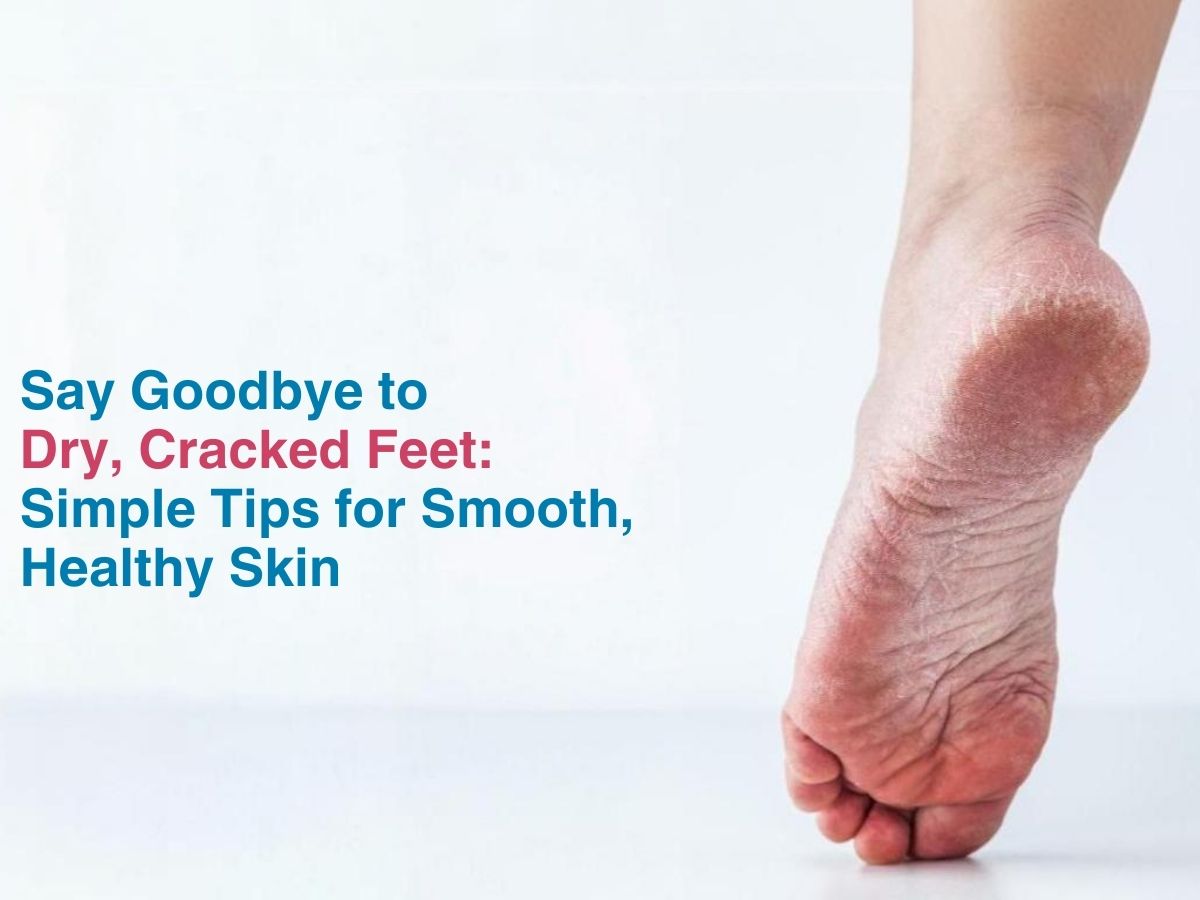
Say Goodbye to Dry, Cracked Feet: Simple Tips for Smooth, Healthy Skin

The heels at the bottom of our feet have a very thick layer of skin, when compared to other regions because they need to insulate us from shocks caused during movement. Heel cracks are a nuisance most of the time and make our feet look and feel dry and unappealing. But, if you don’t deal with them promptly, you may have deep fissures which could bleed and cause an infection later on. They can also cause you a lot of unwanted pain.
How To Prevent Feet From Cracking In Winter
The heels have thick skin obviously, but they also contain fat pads for better shock absorption. You normally get small cracks in the beginning, but as you continue to walk around, you put more pressure on the skin, causing calluses to grow, which are very dry. It is this skin that later gets damaged and causes deeper cracks. Let us look at the main causes of dry and cracked feet and how to fix them, below-
- Not moisturising often and taking hot baths or showers can dry your skin out a lot.
- If you are diabetic, then you need to pay extra attention to the feet, as you may have deeply cracked skin, but not notice due to neuropathy. In severe cases, it may develop into foot ulcers which don’t heal.
- When you spend most of your time barefoot, with no protection for the heels.
- When you use hard or poorly fitting footwear, you may be dealing with this issue pretty often.
- If you are overweight, then you place more stress on the heels.
Some of the common symptoms that you should know are-
- Pain when you try to stand or walk around.
- If the heel feels extra itchy and the skin is very dry and callused, it may crack and bleed.
- You may notice swelling or redness in some cases too.
How To Exfoliate And Soften Dry Feet At Home-
You should try to moisturise your feet often, with an oily or thick moisturiser or petroleum jelly. This will work using the barrier method principle, where the cream prevents moisture from getting lost, keeping the skin soft. Most of the time, this will work but in extreme cases, you may have to get the callused skin surgically removed and use a foot or ankle strap to help you move around better. You will also be asked to change your footwear- softer soles are good for you.
To soften the dry, callused skin, foot soaks are a great idea. Let us look at some DIY foot soaks for dry and rough feet-
- Rock salt or epsom salt in warm water, with a spoonful of coconut oil is great. It will help get rid of pain too.
- You can add in mashed fruit or peels in warm water- like lemon, orange, pomegranate, roses etc. and use an exfoliator to gently get rid of the dead skin. But never overdo it.
- Don’t soak your feet for more than 20 minutes. But, avoid them if you have any foot ulcers or wounds.
Conclusion
Your skin needs vitamins and nutrients to prevent cracked heels- like iron, zinc, Vitamin C and E. You can get them from a highly varied diet. Also, don’t forget to drink plenty of water. Apart from this, it always makes sense to keep a close watch on your feet everyday- keeping them clean and dry helps keep infections away. Complications can arise if you don’t tend to severely cracked heels- like a mild infection or more severe cellulitis, which can be life threatening in some cases. Try finding the perfect, soft soled and well fitting shoes you can get and wear them with socks for the best results. What other tips can you think of? Let us know in the comments below!
Frequently Asked Questions
What causes dry and cracked feet, and how can I prevent it?
How often should I moisturize my feet to keep them soft?
What type of footwear helps prevent dry and cracked feet?
Can cracked feet be a sign of an underlying health condition?
When should I see a doctor for my dry and cracked feet?

Dr. Akansh Jain
MBBS, MD (Dermatology/DVL)
Consultant Dermatologist & Cosmetologist






